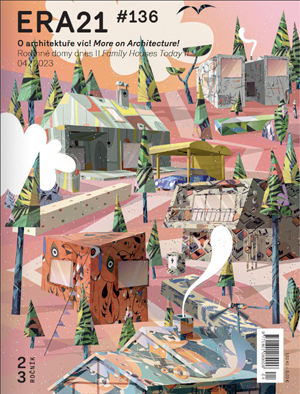Společnost U1 Interior & Lighting, specializující se na design interiérů a luxusního osvětlení, otevírá svou první pražskou pobočku a showroom. Svůj dosavadní úspěch založila především na spolupráci s technologickými firmami, jako jsou Kentico, Fei, Ysoft, Intelek, IBM či Xacti. S týmem U1 a jejich designéry si můžete během letošního Designbloku...
» entire articleCities are gradually becoming larger and more complex technological systems that are interwoven with more and more dense and sophisticated systems of energy, transportation, and communication networks. It is no exaggeration to say that to what we see above the ground, the same amount is hidden underground – utility corridors, product pipelines, sewage collectors, distribution networks, fiber-optic cables – and often kept out of sight on the peripheries are the associated underground facilities of power stations, waterworks, sewage treatment plants, incineration plants, heating plants, technical centers, transmitters, or control centers.
» entire articleLondýnskou čtvrť Canary Wharf ze tří stran obklopuje meandr řeky Temže, díky níž Isle of Dogs (ve skutečnosti poloostrov) sloužil ještě v šedesátých letech 20. století jako skladové prostory pro nedaleké doky. V osmdesátých letech ale Docklands prošly výraznou transformací – z oblasti plné upadajících skladů se postupně stala nejprestižnější evropská finanční čtvrť, kde se nyní česká společnost SIPRAL připravuje na realizaci projektu Wardian London.
» entire articleV sobotu 30. 9. 2017 se v Českých Budějovicích uskutečnil Den architektury s časopisem ERA21. Komentované procházky se zúčastnilo zhruba 70 lidí. Procházka navázala na téma „Výpadek paměti“ zpracované v čísle #03/2017.
» entire article

ERA21 vydává ERA Média, s. r. o. |
|
|
Phone: +420 530 500 801 E-mail: redakce@era21.cz |
|
| WEBdesign Kangaroo group, a.s. |